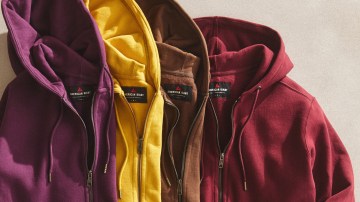Aligne, the British womenswear brand behind TikTok-viral tailored styles and 12,000-person waitlists for its dresses, is entering a new phase of growth via expansion in the U.S.
This week, the 5-year-old label launched in 20 Nordstrom stores and on Nordstrom.com, marking its largest retail partnership to date and its most visible push into omnichannel. For founder and CEO Ginny Seymour, the move follows two years of direct-to-consumer growth and customer learnings, including a surge in U.S. demand that now rivals the brand’s home market.
“The U.S. will be the bigger part of our business now, with it being omnichannel,” she said, noting that the decision to enter retail was less about shifting strategy and more about meeting customers where they already were, and using physical presence to build trust and brand discovery at scale.
“For the first two years, I really wanted to be direct-to-consumer,” said Seymour. “It was about getting to know our customer and being able to move as quickly as possible before going omnichannel.”
That decision paid off. In the U.S., where Aligne has been operating through limited wholesale and affiliate partnerships since 2023, the brand generated $1 million in sales in the first eight months, according to Seymour. More recently, Aligne’s overall revenue grew by 56% year-over-year in the fiscal year ending July 31, 2025 — the brand declined to share exact figures. Seymour said the brand has continued to exceed targets, with U.S. demand now occasionally outpacing its home market.
The U.S. market now represents nearly half of Aligne’s DTC revenue, at 45% — the U.K. accounts for 55%. “We’re getting really close to them being even,” Seymour said. “The U.S. market is obviously a lot bigger than the U.K., and once you hit that customer and you know that customer, it just grows really, really quickly.”
That unexpected surge led Seymour to relocate from London to New York in 2025. It also accelerated plans to build out U.S. infrastructure, including the opening of a dedicated warehouse in May. While production still happens overseas, having a domestic warehouse allows the brand to import inventory in bulk, manage customs clearance internally and absorb rising tariffs. “We are importing and dealing with the tariffs on our end so that we can maintain our prices for our customer,” Seymour said.
While Aligne has tested wholesale before — with select digital partners and a long-standing presence at Liberty London — Nordstrom is its first major U.S. partner with brick-and-mortar reach.
“Nordstrom is really investing in their stores and in the brick-and-mortar experience across the country, and they’re creating an environment that is really exciting for the customer to come into,” Seymour said. Nordstrom reported $15 billion in revenue for fiscal year 2024 in March, with digital sales making up 36% of the total.
“For a partnership like this, it is about momentum and how quickly and organically the brand is gaining traction,” said Emily Crandall, svp and divisional merchandise manager of women’s apparel at Nordstrom. “Beyond sales, we pay close attention to customer sentiment and styling behavior — how Aligne is being integrated into wardrobes.”
Alligne was also drawn to Nordstrom’s transparent reporting capabilities. “They’re really transparent with their reporting to brands; they have a really great platform where we can see what’s selling by size, by color, by style, by location,” said Seymour. “So we really can build the business together.”
Overall, the Aligne team views the Nordstrom partnership as a means to fuel discovery among potential customers, gain regional insights, and validate fit and product performance beyond digital environments.
“At Nordstrom, we’re sitting in prime real estate next to some American brands like Favorite Daughter,” said Seymour. “We’re also launching a few exclusives with them — colors that their fashion office wanted— so we have a little bit of a point of difference.”
Aligne’s business model remains rooted in short-run production. “We want to make sure we’re learning what the customer wants and that we’re not building excess inventory into our supply chain model,” Seymour said. That approach allows the brand to adapt to customer demand across different U.S. regions.




